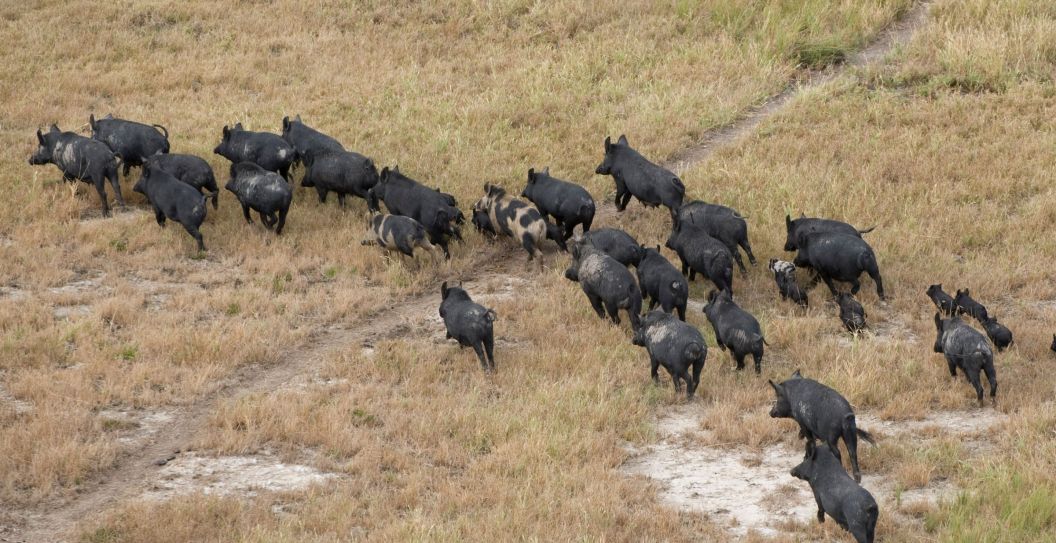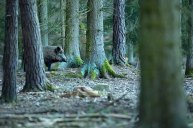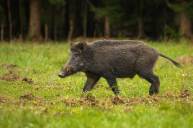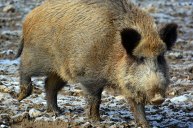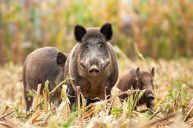A newly released study from a research group in Germany claims that it's the behavioral traits, rather than the "invasiveness," of herbivore "megafauna," that relates to ecological damage. Put it another way: It doesn't matter where the feral hogs in Texas are from, just that their behavioral traits are to root, eat, and generally destroy the plant life around them.
The meta-study was not a boots-on-the-ground field study but rather a sweeping review of already-published data from various sources across the globe. The research did not focus on the specific damage feral hogs have caused to regions they have moved in on. It focuses rather on the invasive species' effect on plant diversity. The study claims that hogs increase plant diversity by foraging the dominant vegetation in a given area, thereby allowing for lesser vegetation species to grow.
While that may sound nice on paper, in Texas and other states where feral hogs have established populations, that is not how it's playing out on the ground.
Whatever positives feral hogs may have in plant diversity are overshadowed by the ravaging effects they have on pretty much everything else in their path. The destructive swine terrorize neighborhoods and cause homeowners and farmers thousands of dollars of damage overnight by rooting up crops, digging holes, and trampling pastures. No green space is safe; they destroy parks, golf courses, and any other locale where they can munch the greenery and dig the earth looking for grubs.
Texas Parks and Wildlife first began efforts to remove the textbook invasive species in 1982. And it's not a problem exclusive to Texas either. Right now, feral hogs are literally running rampant around the country, destroying tons of land in their path.
Texas' Feral Hog Problem
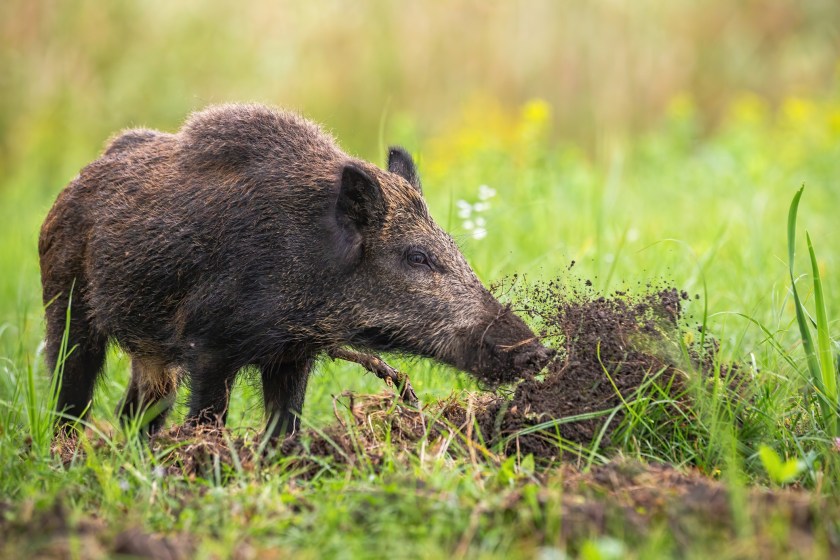
Getty Images, JMrocek
The problem is that hogs will eat literally anything they can find or catch, from roots and tubers to crops to snakes, ground-nesting birds, and even deer fawn. They dig holes upwards of six inches deep and tear out entire hillsides. As Texas Monthly reported, their damage to the land has repercussions beyond just the cost of lost crops; much of Texas is dry where grass and vegetation is very slow to regenerate and the pigs uproot layers of soil to cause erosion and prevent regrowth of anything. They compete directly with deer for food and they damage vegetation that quail and turkey need to thrive. They also are carriers of a number of nasty diseases and there have even been cases of drinking-water sources being contaminated by feral hog droppings.
The swine cause problems pretty much all the time in Texas: They're known to be in all but one of Texas' 254 counties, and their population is continuing to grow in major cities like Houston despite similar extermination efforts. In Sanger, Texas, earlier this year, a herd of wild pigs destroyed an estimated 10 to 15% of newly planted corn in just one night. Farmer Garrett Spigner responded by trapping 40 feral hogs in one week—but that's really only a miniscule fraction of the estimated 2,600,000 in the state.
Wild boar numbers have exploded since the 80s and continues to grow rapidly due to their high reproduction rate, all-encompassing diet, and lack of natural predators. According to Texas Parks and Wildlife, if left alone, the feral hog population could triple in just one year. And considering the wild boar are freaking huge — hunters nabbed a 790-pound hog in 2015 — the effect is real.
Will Hog Hunting Help?
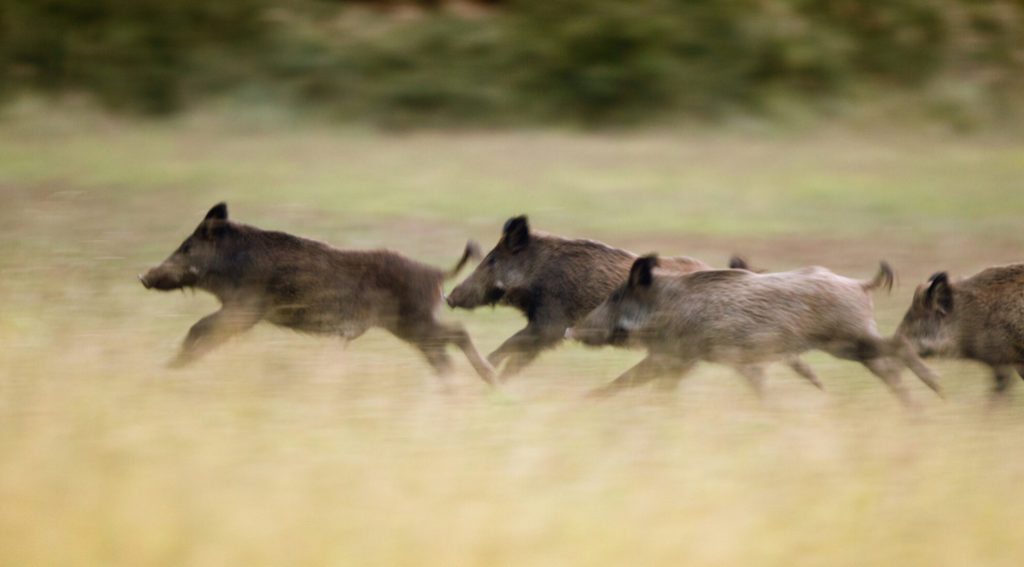
Group of wild boars running in high grass in summer time, panning image technique
Hog hunters and trappers kill an estimated 30% of the feral hog population in Texas annually. But their numbers still grow about 20% every year.
In order to keep the population in check, biologists and wildlife managers estimate that some 70% of the wild pigs in Texas would need to be killed each year, and way more than that would need to be exterminated to actually start bringing the population down any.
The hog hunting regulations in Texas are quite permissive, thanks to a 2019 senate bill that said you no longer need a license to kill wild pigs in Texas. Hunters now pursue the boar all year and don't have any limit on how many they can bag. The feral hogs can be hunted over bait, hunted at night, or trapped. The Texas state government has taken steps in recent years to encourage alternative feral swine removal methods, such as hog hunting from aircraft and hot air balloons. Feral swine can even be pursued from a helicopter (a method called porkchopping).
When all is said and done, roughly 775,000 feral hogs are taken by recreational, commercial, and government hunters and trappers each year in Texas.
However, hogs quickly respond to hunting and trapping pressure by changing their habits or leaving the area. This is fine by them, considering hogs are known to travel far in search of food. But it makes long-term management of the feral hog population difficult and complicated.
In a few small win, landowners and biologists have had some success getting the population under control in small areas. But these are usually short-term successes that only last until a new hog sounder moves in and the cycle starts over again.
What Will Curb the Wild Pig Population?

Getty, John Carnemolla
Poison has been touted as a potential solution to the feral hog infestation, but the use of a feral hog poison on a large scale is a hotly contested idea.
Among other issues, researchers have had a hard time nailing down a poison that'll quickly and reliably kill hogs but that won't also harm other wildlife. One big setback occurred when nearly 200 birds died after consuming sodium nitrite poison intended for hogs during field testing in northern Texas.
For a while, the leading poison option was Kaput feral hog poison, which contained warfarin—used in rat poison—and garnered got approval from the Environmental Protection Agency (EPA). The substance is reputedly safe for deer, turkeys, cattle, and other animals that may accidentally ingest it, and it includes a dye in the bait that turns the fat of the animal red, alerting a hunter who shoots it that may have been poisoned. But hunters and animal rights activists both weren't fans by the potential for the poison to still reach humans or pets via wildlife food supply.
Researchers have also introduced an option called HogStop, which is all-natural and uses cottonseed oil to suppress boars' fertility. Scientists aren't so sure this product could actually have a meaningful effect on the wild boar population, considering the creatures need to absorb it through multiple feedings and the male boars roam far and wide, making it difficult for them to eat enough of it to sterilize them. Hand-injected contraceptives and several toxicants are also in consideration.
So, until a significant solution is implemented, Texas and the greater United States has a serious invasive issue on their hands, despite what the theoretical research claims.
